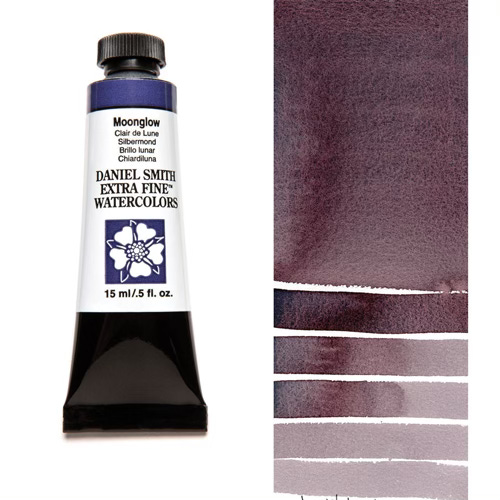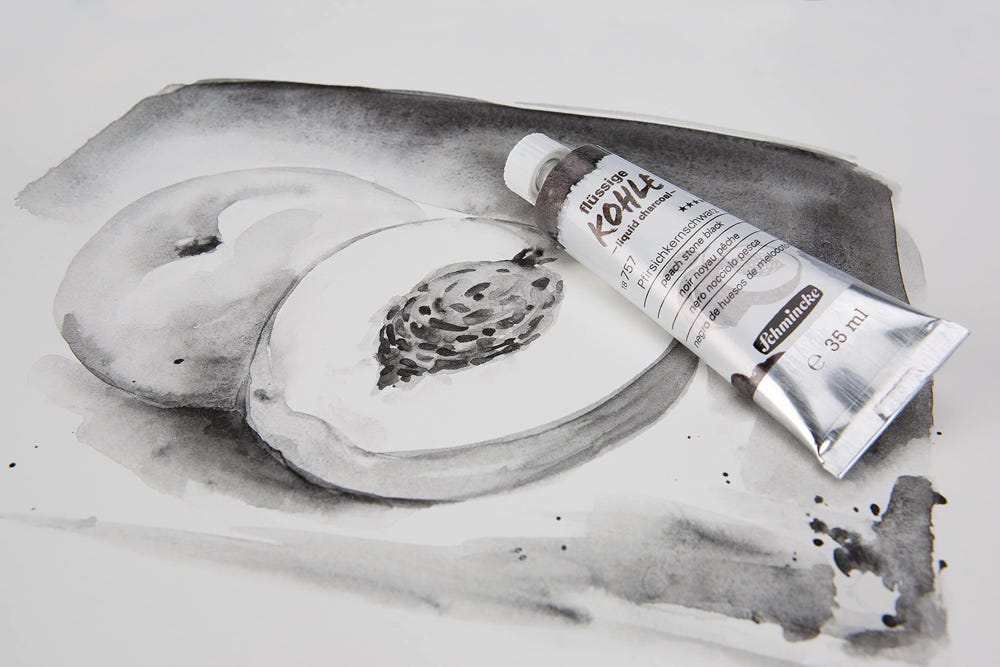To the earth, the time we’ve lived in is just a blink, so let’s think on geological time. It’s less painful than focusing on recent events.
Speaking of rocks, I’ve been turning over many of them lately, in my review of traditional art materials. I’ve been looking at many different things in the throws of my obsession with watercolor. One rock, in particular, had something pretty cool underneath it. One of the oldest art mediums has a new life. Pretty mysterious, eh?!
But first, a little diversion! In my Risograph shop, we’re in love with purple! It’s a great alternative to printing with black. The Riso purple has a broad tonal range and a very dark masstone (or the color as it appears straight from the tube), and when making, say, a two-color print, it has a great complement in the Riso color Sunflower or even plain old yellow. Not everyone has easy access to a Risograph printer, but a decent alternative for getting purple (ish) in your life is a color from Daniel Smith called Moonglow. I love it. Maybe you will, too.
And now, the mystery is revealed… Charcoal. The mystery material with a new life is charcoal. Surprised? And the way it is new? It’s a liquid! Charcoal dust aggravates my sinuses — and the mess messes with my chill — but I miss using it. When I was in Berlin in May, I ran across Liquid Charcoal from Schminke. At first, I thought it was just marketing for a new black watercolor, but it IS liquid charcoal.
When used on cold-pressed watercolor paper, liquid charcoal is dust-free and stays in place. You can work back into it, add water, and move it around with a brush. It’s not much like watercolor — it doesn’t disperse like watercolor. Burnt grape seed, cherry pit, or peach stone comprise the paint. The grape seed is cold and blueish, and the cherry pit is black but warm. The peach pit is very neutral. I work with Liquid Charcoal straight out of the tube and dilute it with water liberally.
If I had to choose just one of the three flavors, I’d take the peach stone. It’s the most neutral and is very black at the masstone. It has a great tonal range. To my mind, it’s the most useful. Fortunately, you don’t have to choose just one. Schmincke offers a combo of all three colors in 5ml tubes for one price. If you like the heavy granulation of watercolor and want to mix things up with a rich and textural medium, give the liquid watercolor a shot. I plan on using liquid charcoal in future drawing classes. Take a look at this little clown sketch that I made. The clown is laughing on the outside, but crying on the inside.
Click here for product info.
If you’re intrigued, you might want to add a hog bristle paint brush or two to your shopping list. I think watercolor brushes feel a bit flimsy when used with the liquid charcoal. Finally, please note that I’m not making any money on this review or on any of the links. I like Daniel Smith and Schmincke — but I don’t LIKE LIKE them. Thanks for reading!






